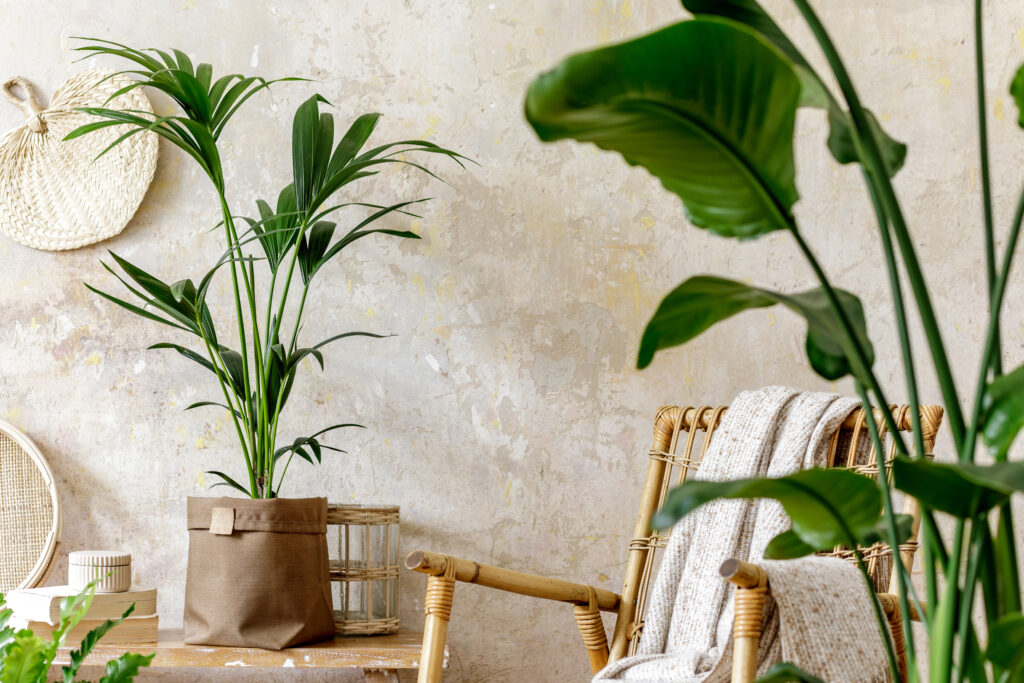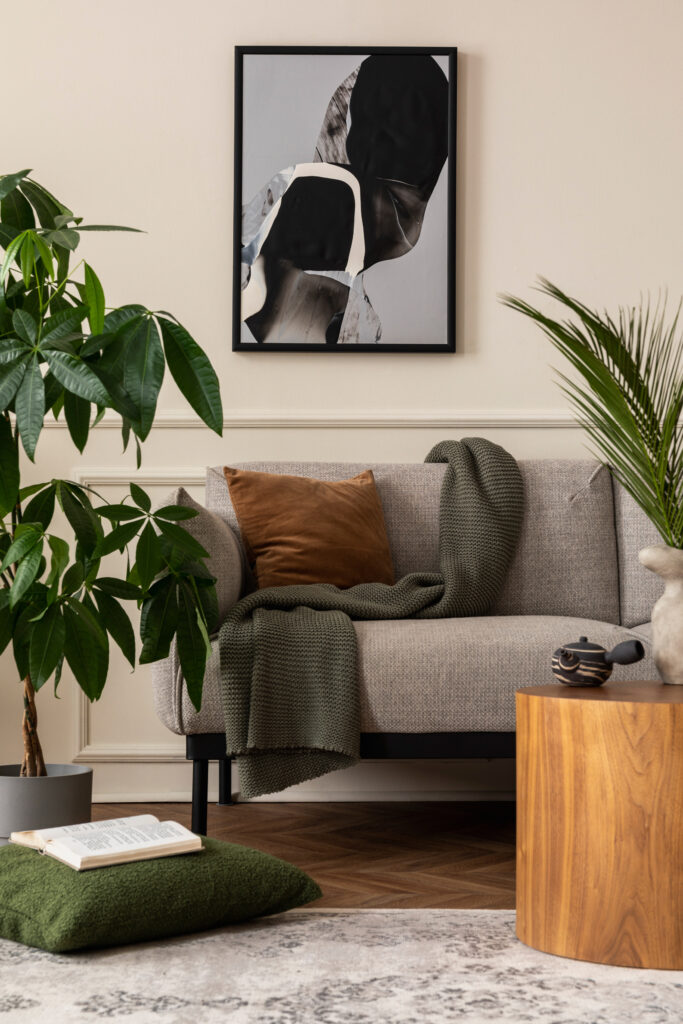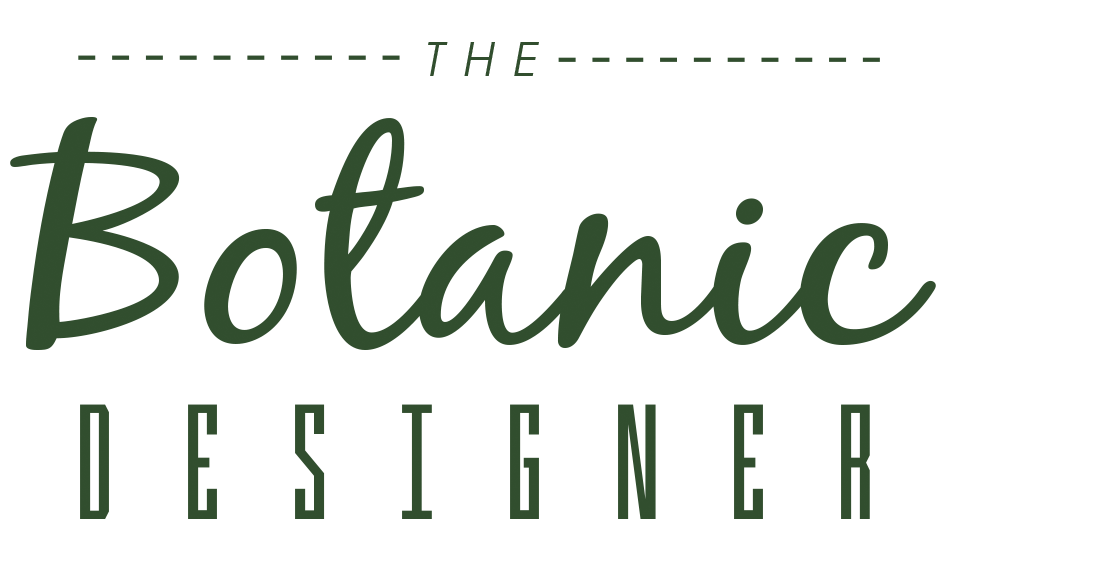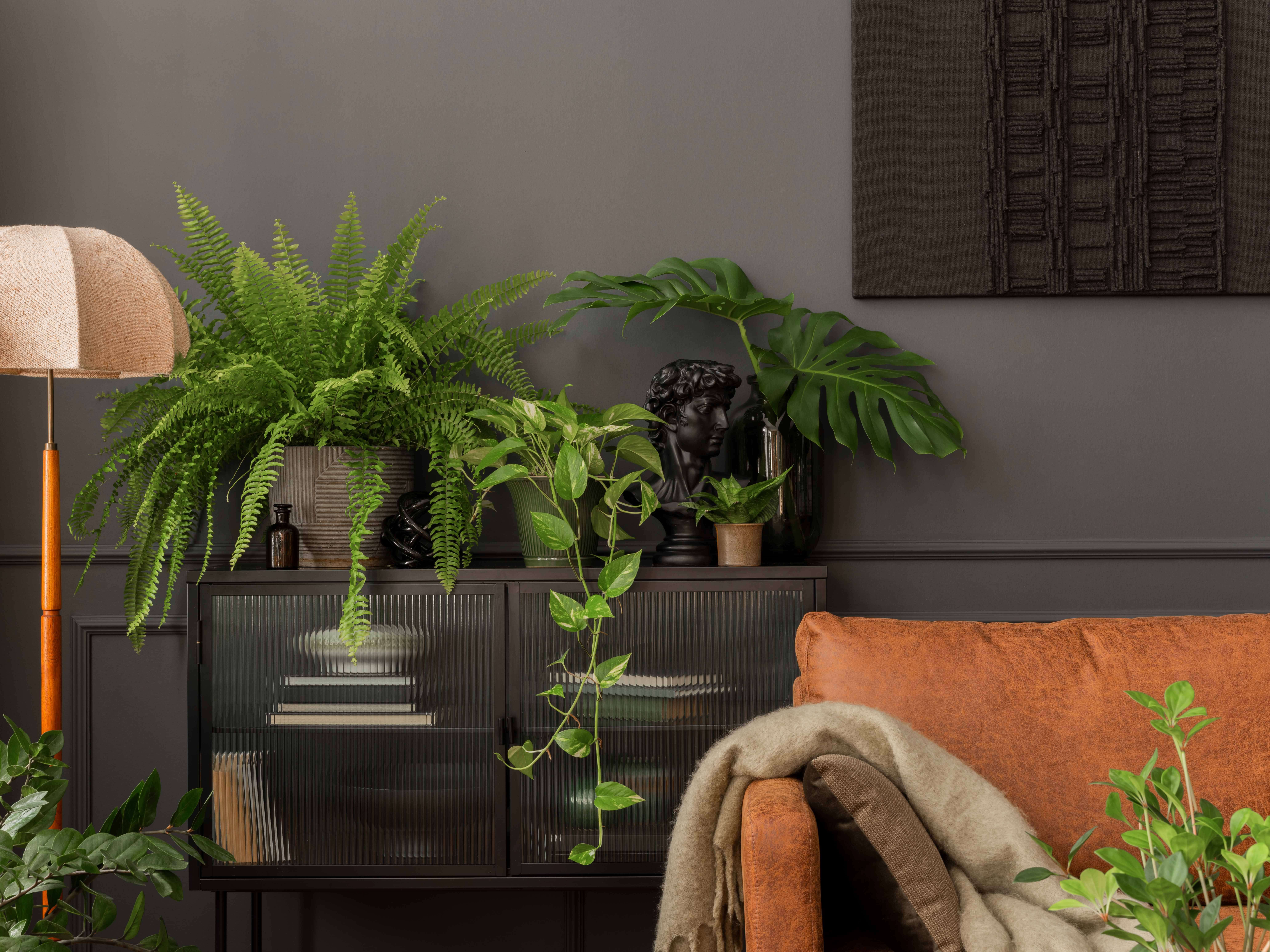by Markus Hamence – June 2025
There’s a movement afoot, one you’ve probably felt – even if you haven’t put a name to it yet.
It’s the urge to fill your home with plants. To open the windows wider. To swap out cold, synthetic surfaces for warm wood. To hang art inspired by leaves, rivers, clouds.
That, my friend, is biophilic design coming into your life. And in our overstimulated, screen-heavy, urbanised world, it’s no surprise that more people than ever are embracing it.
So let’s take a deep dive into this beautiful, meaningful design philosophy – and see how you can bring a little more wild magic into your own home.
What Is Biophilic Design?
The word biophilia literally means ‘love of life’ or ‘love of living things’. The concept was first popularised by biologist E.O. Wilson in the 1980s, who proposed that humans are hardwired to seek connections with nature. After all, for 99% of human history, we lived among forests, rivers, meadows – not concrete and LED lights.
Fast-forward to today: we spend around 90% of our time indoors. And while modern life is convenient, it often strips us of that essential connection to the natural world. Cue rising rates of stress, burnout, disconnection.
Biophilic design is an intentional response to this. It’s about designing our homes, workplaces, schools, and public spaces to reconnect us with nature – not just visually, but through all the senses.
And the beauty is: it’s not about recreating a jungle in your lounge room like me (though hey, if that’s your vibe too, then go for it). It’s about subtle, meaningful touches that make your space feel alive and nourishing.

The Science-Backed Benefits of Biophilic Design
Far from just a pretty aesthetic, biophilic design is strongly backed by science. Numerous studies show that incorporating natural elements into indoor environments can:
- Reduce stress and anxiety
Just five minutes spent looking at greenery can lower cortisol levels. - Boost focus and productivity
Especially useful in home offices and classrooms. - Enhance mood and mental well-being
Natural materials and greenery can help combat depression and promote feelings of calm and happiness. - Improve physical health
Even views of nature can lower blood pressure and heart rate. In hospitals, patients with natural views recover faster. - Spark creativity and innovation
Exposure to organic forms and natural environments can fuel imagination.
In other words, biophilic design isn’t just trendy – it’s deeply human, and something we genuinely need to thrive in today’s world.
The Mental Health Connection
One of the most profound benefits of biophilic design lies in its impact on mental health. In an age where anxiety, depression, and burnout are on the rise, reconnecting with nature can act as a powerful form of self-care. Studies have shown that even small doses of nature – whether it’s tending to houseplants, gazing out at trees, or surrounding yourself with natural textures – can lower symptoms of anxiety and depression. The presence of greenery and natural light has been linked to improved emotional resilience, greater psychological restoration, and a deeper sense of well-being and connection. Simply put: when your environment nurtures you, your mind can breathe.

Key Elements of Contemporary Biophilic Design
So what does modern biophilic design look like in practice? It goes far beyond the token office plant. Think of it as weaving nature through the entire experience of a space:
1. Natural Light
Maximising daylight is one of the simplest ways to bring life into a space. Large windows, skylights, translucent materials – all help bathe interiors in mood-lifting light.
2. Living Greenery
Indoor plants, green walls, terrariums, herb gardens – living elements bring movement, texture, and literal oxygen into your space.
3. Natural Materials and Textures
Stone, timber, cork, bamboo, linen, clay – materials that age, patina, and feel good under your fingers.
4. Water Features
Flowing water is inherently soothing. A small fountain, an indoor water wall, or even an aquarium can introduce its calming presence.
5. Nature-Inspired Forms and Patterns
Biophilic design often incorporates biomorphic shapes: curves, spirals, fractals – patterns that echo the natural world.
6. Views and Vistas
A window that frames a tree, a balcony full of potted plants, or even art that suggests a landscape helps orient us toward nature.
7. Sensory Variation
It’s not just about what we see – biophilic spaces engage all the senses: the scent of a garden, the texture of raw timber, the sound of rustling leaves.
How to Bring Biophilic Design Into Your Home
You don’t need a designer budget to get started. Here are some simple, contemporary ways to weave nature into your everyday spaces:
- Fill your home with plants
Start with easy-care varieties: pothos, snake plants, monsteras, or zz plants. - Maximise natural light
Use sheer curtains or none at all. Place mirrors to reflect daylight. - Choose natural materials where you can
Wooden furniture, linen throws, wool rugs, stone accents. - Incorporate nature-inspired art
Think botanical prints, landscapes, abstract patterns drawn from nature. - Introduce gentle soundscapes
Water features, or even an app that plays nature sounds. - Design for views of nature
Position seating to face windows or gardens. - Embrace wabi-sabi
Allow natural materials to show wear and imperfection – they tell a story and connect us to the passage of time.
Final Thoughts: More Than a Trend, A Way of Life
In an era of digital fatigue, climate crisis, and urban stress, biophilic design feels less like a luxury and more like a necessity.
It’s not about creating Instagram-perfect interiors – it’s about making spaces that feel good for your mind, body, and spirit.
And the best part? Biophilic design is incredibly personal. It invites you to tune into what makes you feel alive – whether that’s a wall of leafy vines, a smooth stone you keep on your desk, the scent of lavender, or an open window that lets in birdsong.
In other words: there’s no wrong way to begin.
So go ahead – add that plant. Open that window. Choose that wooden table over plastic. Little by little, you’ll feel nature weaving its way back into your life.
And trust me – you’ll wonder how you ever lived without it.
Images of my Biophylic inpsired home (though a bit over-the-top haha)


















